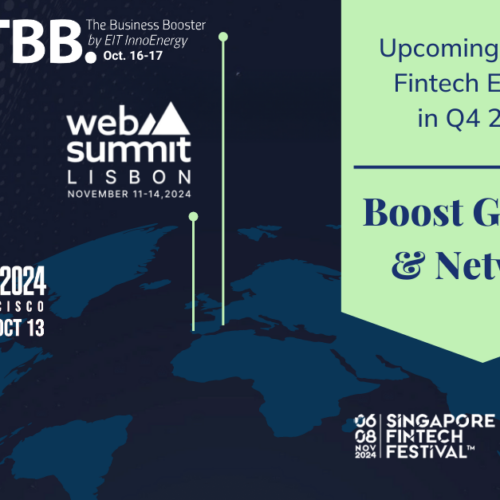Innovation in Telecommunications
The telecommunication industry is advancing rapidly with 5G, edge computing, IoT, and generative AI leading the charge. Pushing for innovation in telecommunication is crucial if you want to stay competitive in this dynamic field. Enterprises must continually adapt and invest in these emergent technologies to meet evolving communication demands.
Entrapeer Powers Telco Leaders
Gen AI Applications in Telco
Generative AI is transforming the telecommunications industry by enhancing customer service, optimizing network operations, and improving fraud detection. This new innovation in the telecommunication industry allows for the creation of personalized customer interactions and efficient data handling, significantly cutting costs and boosting operational efficiency. However, its adoption faces challenges such as the need for substantial computational resources and concerns over privacy and data management. As generative AI evolves, it is poised to play a crucial role in advancing telecom services and infrastructure.


Marketing for SME Size Telco Operators
Telecommunications operators are increasingly focusing on the small and medium enterprise (SME) sector within the B2B market due to its significant growth potential. Successful strategies include enhancing core connectivity, expanding selectively into IT services like cloud and security, and developing scalable product portfolios tailored to diverse business needs. Operators are also leveraging advanced analytics to uncover revenue opportunities and optimize costs. A differentiated customer engagement approach is crucial, with strategies varying by the size and type of SME to ensure targeted, effective marketing and service delivery.
Fintech Practices of Telcos
Telecommunications companies are actively integrating FinTech to address challenges like declining revenues and competition. This strategic shift involves leveraging technologies such as digital banking, mobile payments, digital wallets, and blockchain, enabling telcos to offer a variety of financial services. These services enhance customer convenience, foster loyalty, and position telcos as key players in financial and digital landscapes. By adopting FinTech, telcos not only diversify their revenue streams but also enhance their service offerings, strengthening their market presence and contributing to the broader innovation in the telecommunication industry.


LEO Satellite Systems
Low Earth Orbit (LEO) satellites are transforming the satellite industry by offering significant advantages over traditional geosynchronous orbit satellites. Positioned about 2,000 kilometers above Earth, these satellites are part of constellations that enhance data communication speed, coverage, and latency. The LEO satellite market is anticipated to see substantial growth, with a projected revenue of USD 20.1 billion by 2027, driven by advancements in satellite technology and increased demand across various industries.

The Rise of eSIMs
eSIM (embedded SIM) technology, first gaining prominence in IoT devices in 2010, has expanded into consumer electronics with notable adoption by companies like Apple and Samsung since 2016. Valued at USD 8.8 billion in 2023, the eSIM market is projected to grow to approximately USD 20.6 billion by 2032. This growth is fueled by the rising integration of IoT applications and a broader acceptance within the telecommunications industry. Innovations in the telecommunication industry, such as eSIMs enhance device flexibility and network management across multiple sectors, including automotive and consumer electronics, despite facing challenges like regulatory hurdles and privacy concerns.

Recent Telco Blogs
We’ve helped industry leaders in every sector discover and partner with emerging innovations in the telecommunication industry, enabling them to stay ahead of market trends and drive continuous growth and efficiency.
Frequently asked questions
Everything you need to know about the product and billing.
Can’t find the answer you’re looking for? Please contact our support team.
Entrapeer is the world's largest use case database and the first evidence-based corporate innovation matchmaking tool.
We help industry-leading enterprises find the right startup solutions based on emerging tech trends. Simultaneously, we act as a sales enablement tool for startups by translating startup success stories into use cases that enterprises can easily understand and adopt.
Many market intelligence or innovation platforms simply scrape the web and harvest whatever information they might find.
The problem is that none of that data is verified. None of those sources are vetted. These sites rely on startups to regularly check their profiles and update their info.
Here at entrapeer, we collect use case-specific data from trusted sources to show proof of a startup’s past successes and demonstrate product readiness. We also offer third-party verification upon request, wherein we contact a startup’s past customers to confirm project results.
“Market Research” describes the reports we generate around trending topics to make use cases more discoverable. These reports might be inspired by market data, tech trends, or user behavior. Actually, they’re kind of like Netflix categories. They might refer to…
- specific tech like 5G or blockchain,
- “genres” like green energy or cybersecurity,
- or more complex concepts like “remote work enablement” or “fast-moving consumer goods”
And just like oddly specific Netflix categories, new market research reports are emerging all the time so keep an eye out or suggest your own.
Put simply, a “use case” is a hypothetical or real-life application of a product or service. It describes how someone might use that product/service to achieve a specific goal.
For example, AI has many use cases in all aspects of our everyday life. It can be applied to insurance software to detect claims fraud or molecular analysis programs to discover new pharmaceutical drugs.
We help enterprises find use cases that enable them to understand how novel technologies might apply to their business, and thereby identify new innovation opportunities.
When it comes to vetting potential partners, case studies just don’t cut it. That’s because case studies can be biased or missing essential information like project length or customer involvement.
That’s why we use evidence.
Evidence represents all the data enterprises need in order to confidently invest in innovation. Evidence includes case studies, but it’s a lot more than that. It’s stuff like use cases, market insights, technical papers, ROI, project duration, startup certifications, and much more.
For each startup that joins the platform, entrapeer collects all of this data and strips it of all marketing fluff. That way, each startup’s profile presents only the evidence.
If you’ve looked into other innovation scouting platforms, you know that those subscription fees can be pretty steep.
Enterprises can pay millions per year just for the slight chance of finding a startup solution to fit their ever-changing needs. Meanwhile, startups spend thousands per month on unintuitive “sales enablement” tools that don’t result in qualified leads.
We keep our prices well below the standard market rate by monetizing both sides of the marketplace: we offer matchmaking services for enterprises and a sales enablement platform for startups.
To learn more about our pricing, please schedule a quick 15-minute call using this link.








